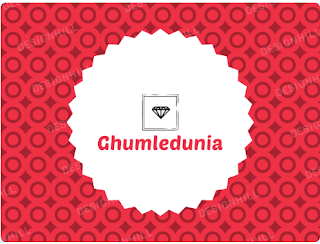There are many high-fiber foods you can eat to help promote regularity and prevent constipation. Here are some examples:
High-fiber Fruits
1. Berries
2. Apples
3. Pears
4. Oranges
5. Bananas
6. Kiwi
7. Prunes
High-fiber Vegetables
1. Broccoli
2. Spinach
3. Carrots
4. Sweet potatoes
5. Brussels sprouts
6. Kale
7. Peas
High-fiber Legumes
1. Lentils
2. Chickpeas
3. Black beans
4. Kidney beans
5. Navy beans
6. Split peas
High-fiber Nuts and seeds
1. Almonds
2. Chia seeds
3. Flaxseeds
4. Pumpkin seeds
5. Sunflower seeds
High-fiber Whole grains
1. Oatmeal
2. Brown rice
3. Quinoa
4. Barley
5. Bulgur
6. Whole wheat bread
7. Whole wheat pasta
It's important to gradually increase your intake of high-fiber foods to avoid digestive discomfort such as bloating and gas. Aim for at least 25-30 grams of fiber per day for optimal digestive health.
Additionally, make sure to drink plenty of water throughout the day to help the fiber move through your digestive system.
Why is Oatmeal Considered Good for Constipation?
Oatmeal is a good food to help relieve constipation. Oatmeal is high in fiber, which can help promote bowel movements and alleviate constipation. The fiber in oatmeal adds bulk to the stool, which helps it move more easily through the digestive tract. Additionally, oatmeal contains both soluble and insoluble fiber, which work together to promote regularity.
To get the most benefit from oatmeal for constipation relief, it's important to drink plenty of water throughout the day, as fiber needs water to help move through the digestive system. You may also want to consider increasing your overall intake of high-fiber foods, such as fruits, vegetables, and whole grains, to help keep your digestive system functioning properly.
High-fiber snacks
Here are some high-fiber snack ideas:
Fresh fruit
1. Apples
2. Bananas
3. Oranges
4. Berries
Raw vegetables
1. Baby carrots
2. Cherry tomatoes
3. Cucumber slices, with hummus or guacamole
Nuts and seeds
1. Almonds
2. Pistachios
3. Pumpkin seeds
4. Popcorn (air-popped or lightly buttered)
5. Whole-grain crackers or rice cakes with nut butter or avocado spread
6. Greek yogurt with berries and a sprinkling of chia seeds or ground flaxseed
These snacks are not only high in fiber, but also provide other important nutrients, such as vitamins, minerals, and healthy fats. Remember to drink plenty of water with your high-fiber snacks to help keep your digestion regular and prevent constipation.
High-fiber snacks good for people with diabetes
Here are some high-fiber snacks that are also good for people with diabetes:
- Fresh fruit, such as apples, berries, and oranges
- Raw vegetables, such as celery, broccoli, and bell peppers, with hummus or guacamole
- Nuts and seeds, such as almonds, walnuts, and chia seeds
- Greek yogurt with berries and a sprinkling of ground flaxseed
- Roasted chickpeas
- Whole-grain crackers or rice cakes with nut butter or avocado spread
These snacks are low in added sugars and carbohydrates, and are high in fiber, which makes them a good choice for people with diabetes.
It's important to keep in mind that while these snacks are healthy, they should still be consumed in moderation as part of a balanced diet.
Mistakes Diabetic People Make When Choosing Snacks
Here are some common mistakes people with diabetes make when choosing snacks:
1. Choosing snacks high in added sugars
Many processed snacks, such as candy, cookies, and sweetened drinks, are high in added sugars, which can cause blood sugar levels to spike. It's important for people with diabetes to limit their intake of added sugars and instead choose snacks that are naturally sweetened, such as fruit.
2. Forgetting to factor in carbohydrates
Carbohydrates have the biggest impact on blood sugar levels, so it's important to factor in the amount of carbohydrates in a snack when choosing a snack. People with diabetes should aim for snacks that are low in carbohydrates, or that have a moderate amount of carbohydrates that can be balanced with protein and fiber.
3. Overlooking the importance of fiber
Foods high in fiber can help regulate blood sugar levels and promote feelings of fullness, which can help prevent overeating. Choosing snacks that are high in fiber, such as fruits, vegetables, and nuts, can help stabilize blood sugar levels and promote healthy digestion.
4. Not paying attention to portion sizes
Even healthy snacks can cause blood sugar levels to spike if consumed in large quantities. It's important for people with diabetes to pay attention to portion sizes and choose snacks that are appropriately sized for their individual needs.
By avoiding these common mistakes, people with diabetes can choose snacks that are not only tasty, but also healthy and supportive of their overall health and blood sugar management.
Bookmark the post - By clicking on the ⭐ icon above the website
👉 Join our Group - Facebook Group






















0 Comments